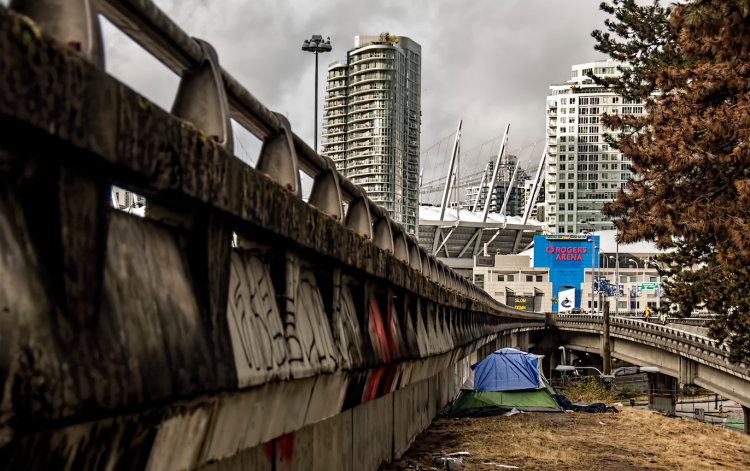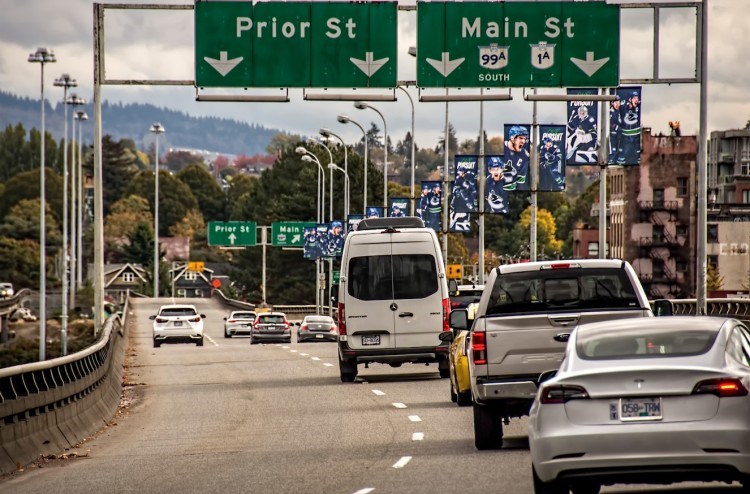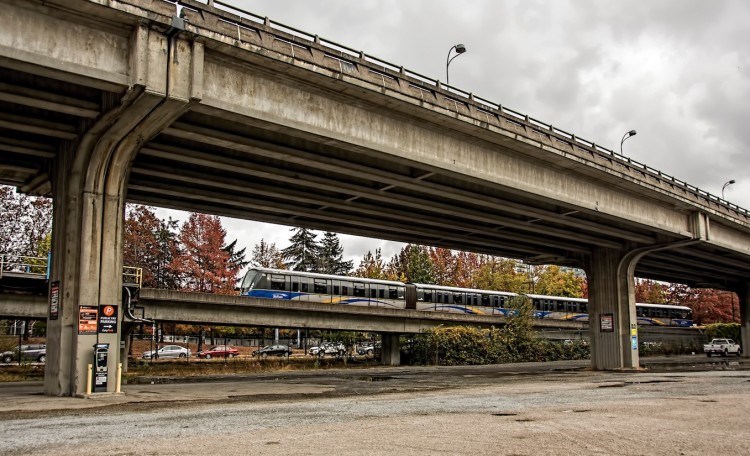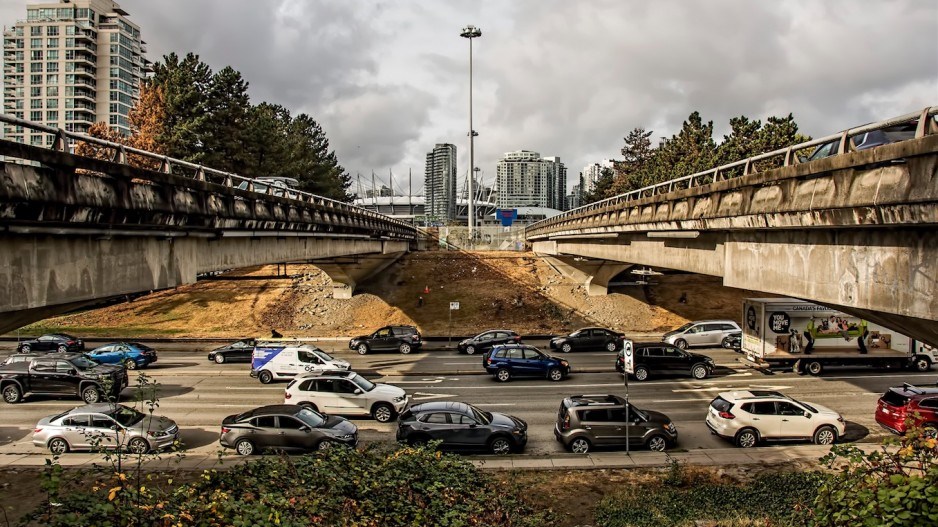The Vancouver city council set to be sworn in Nov. 7 is likely to re-examine a project to demolish the Georgia and Dunsmuir viaducts.
Little time in the recent municipal election campaign was spent on the initiative aimed at creating a vibrant Northeast False Creek neighbourhood.
Nonetheless, top city council vote-getter and A Better City Coun. Sarah Kirby-Yung told BIV that the project needs to be re-examined.
That is because so much has changed since Vancouver city council in October 2015 voted to remove the viaducts to free up land for housing and parks, and in 2018 voted to approve the Northeast False Creek Plan, she said.
Back in 2015, the viaduct-removal project was expected to begin in 2017 and be finished by 2020, funded entirely by community amenity contributions (CACs) from developers.
Canadian Metropolitan Properties Corp.’s (CMP) redevelopment of the Plaza of Nations then languished. So did Concord Pacific’s redevelopment of its land to the east of the Plaza of Nations, where Cirque de Soleil has sometimes staged shows in temporary tents.
BC Pavilion Corp. (PavCo) did not redevelop its land between BC Place and Rogers Arena. Aquilini Investment Group similarly owns undeveloped land near Rogers Arena.
Delays in those projects meant no money flowed to the city to embark on the project.
“It’s not a question of stopping it right now,” Kirby-Yung said of demolishing the viaducts. “There is no funding, so there isn’t anything to stop.”
The city’s most recent estimate is that demolition will not start until at least 2027, with some changes to road networks happening in the next few years.
Kirby-Yung is open to having the project proceed but is not convinced that funding from developers will be sufficient.
In part that is because the full cost of remediating soil in the properties under the viaducts is unknown.
Vancouver’s unaffordable housing problem has also mushroomed in recent years into a full-blown crisis, convincing city councillors that Northeast False Creek needs a diverse range of housing tenure and not simply the strata units that were originally envisioned, she said.

(The viaducts have become a physical and psychological barrier that divides what could be a vibrant neighbourhood | Image: Chung Chow)
Rental, social and other non-strata housing styles would bring in less money from developers than would strata condominiums, Kirby-Yung explained. That means that money from senior levels of government may be needed, she said.
“I think there’s an opportunity to really revisit how that project is looked at,” she said.
“There isn’t an identified funding mechanism on whether money comes through development, or whether – appropriately, I think – it’s an opportunity for senior governments to invest in decommissioning a significant piece of transportation infrastructure.”
Green Party Coun. Pete Fry, who lives in the Strathcona neighbourhood a couple blocks from the viaducts, told BIV that he also believes money from senior governments may be needed to demolish the viaducts because the city may get less money out of developers when it requires diverse housing forms.
He is, however, taking a wait-and-see approach because area developers appear to finally be about to break ground on projects.
“In the next few months we will be submitting our rezoning application,” Concord Pacific spokesman Peter Udzenija told BIV. “We are excited to work with the new council.”
CMP, meanwhile, is angling to start building a terraced 28-storey mixed-use building as part of its first phase of redeveloping the Plaza of Nations, thanks to the city’s development permit board on June 27 approving a conditional development permit.
CMP's tower is expected to have 646 condominiums, 171 social-housing units and commercial space.

(Vehicles travel east on the Georgia Viaduct | Image: Chung Chow)
Fry said that any new look at removing the viaducts will have to consider that St. Paul’s Hospital will be operating on False Creek Flats.
When council first approved demolishing the viaducts, councillors expected that the viaducts would be gone long before the hospital launched operations.
To improve access to the future hospital, there will need to be “significant changes to Gore Avenue,” which may include truncating the viaducts before any full removal, Fry said.
He added that removing the viaducts could improve ambulance response time because viaduct traffic can get bottlenecked.
The plan for a new road network would include a main arterial rode through the Northeast False Creek neighbourhood.
Another argument for removing the viaducts is that there is a risk that in an earthquake they could come “tumbling down,” on top of other infrastructure, such as the SkyTrain line, Fry said.

(Keeping the viaducts comes with the seismic risk that they could fall on the Skytrain line | Image: Chung Chow)
Brent Toderian, who was the city’s chief planner between 2006 and 2012, told BIV that when initial cost-benefit analyses were done on whether to remove the viaducts, everyone knew that keeping the status quo would entail costs for maintenance and seismic upgrades.
He said that if the city requires funding from senior levels of government to help finance demolishing the viaducts, the project could be stalled in limbo indefinitely.
“It won’t be a priority for higher-order governments,” Toderian said. “[Asking them for financing] might seem to be a good way to get this idea paralyzed.”
Toderian supports demolishing the viaducts because that would create a livable neighbourhood without the physical and psychological barriers that separate the area around False Creek from the Downtown Eastside.
Toderian added that he thought the debate around whether the demolition was a good idea had been decided years ago.
The viaducts were originally built in 1915 to bypass tidal waters, rail lines and industrial uses, and the current structures were rebuilt in the 1960s as the first part of an anticipated freeway system.
“If we had known the freeways weren’t going to be built, we never would have built the viaducts,” he said. “I have this observation in cities that once we build a piece of infrastructure for cars, we can’t imagine it not existing – even though it was never needed in the first place.” •




